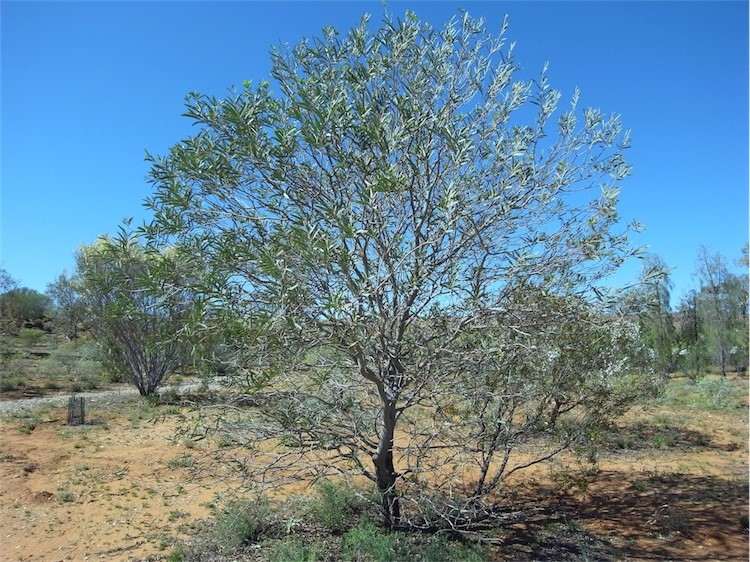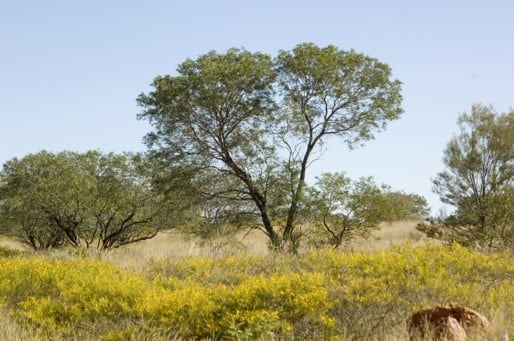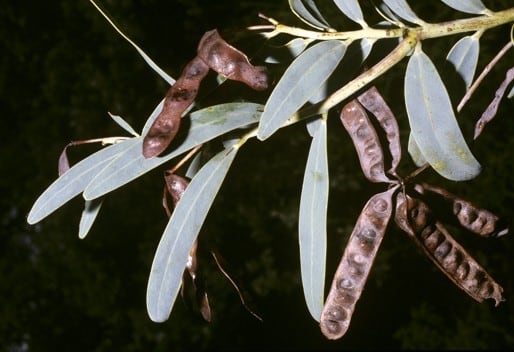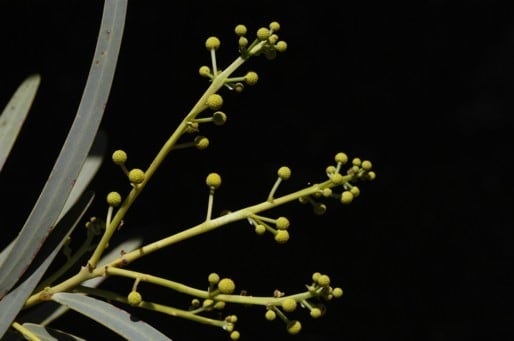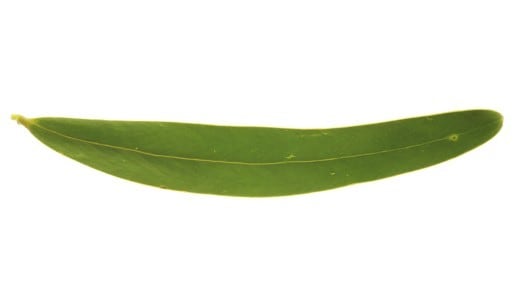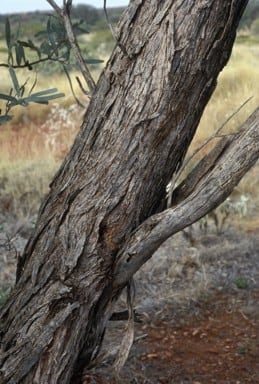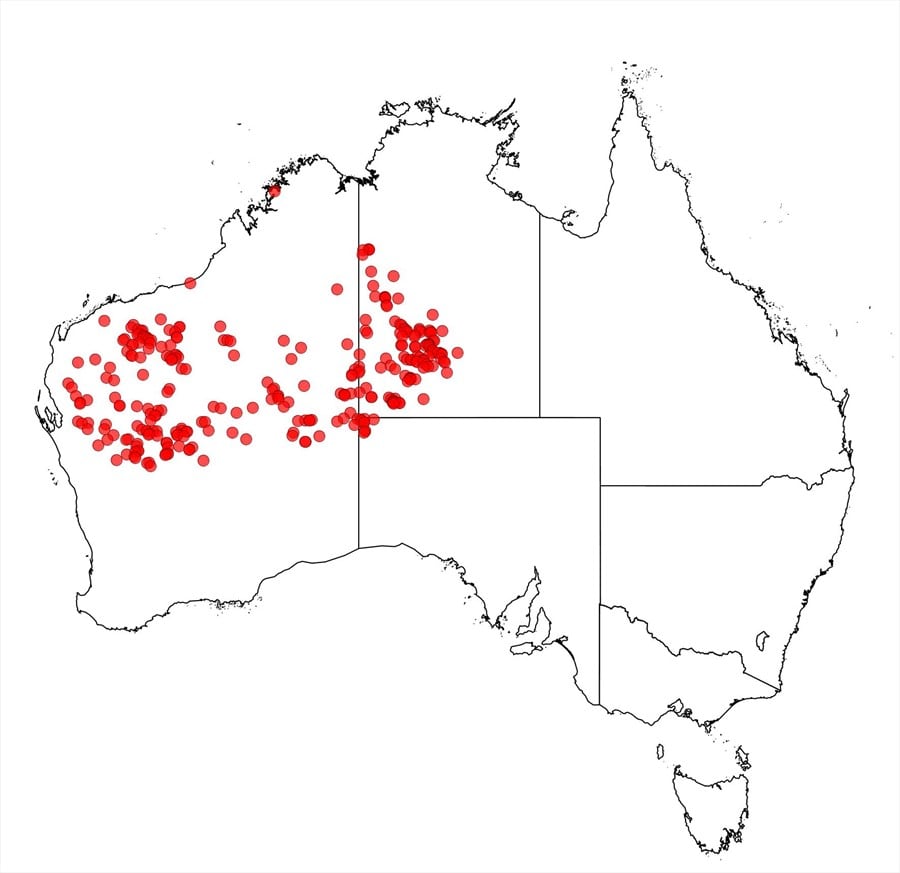Acacia pruinocarpa Tindale
WATTLE
Acacias of Australia
Common Name
Western Gidgee, Christmas Wattle (Hamersley Ra. area), Southern Gidgee, (Black) Gidgee, Black Wattle, Tawu
Family
Fabaceae
Distribution
Occurs in arid areas from near S side of Millstream–Chichester Natl Park, W.A., E to near Tanami and Burt Plain, N.T., and Mann Ra., S.A.
Description
Handsome trees commonly 5–6 m but on favourable sites may attain 12 m high. Branchlets often pruinose, glabrous. Phyllodes normally spreading widely, linear to linear-elliptic, straight or shallowly recurved, 6–17 (–22) cm long, 6–20 (-30) mm wide, obtuse to subacute, thick, coriaceous, subglaucous to glaucous, glabrous; midrib and marginal nerves prominent; lateral nerves obscure; glands 2–5, lowermost largest and basal. Inflorescences 6–20-headed racemes; raceme axes 3–15 cm long, stout, often pruinose, glabrous; peduncles 1–4 cm long, mostly 2 or 3 together along raceme axes, rather stout, glabrous; heads globular, 7–8 mm diam., densely 55–110-flowered, light golden, very showy. Flowers 5‑merous; sepals united; bracteole laminae and sepal apices densely golden-hairy. Pods narrowly oblong, to 12 cm long, 9–17 mm wide, flat but raised over the seeds along the midline, chartaceous to thinly coriaceous, often pruinose, glabrous. Seeds transverse to oblique, ovate to oblong-elliptic or suborbicular, 5–6 mm long, dull, black; funicle flat, liguliform; aril small.
Phenology
Flowers late Oct.–early Jan.
Habitat
Grows in a variety of topographic situations, usually in sand or loam, often with members of the ‘A. aneura group’ and spinifex.
Specimens
W.A.: 53 km S of Nullagine on Great Northern Hwy, B.R.Maslin 4964 (PERTH); Pass of the Abencerrage, Rawlinson Ra. D.E.Symon 2495 (K, PERTH). N.T.: Mt Doreen Stn, P.E.Conrick 1425 (PERTH); 8.4 km W of Desert Block House, Amburla Stn, J.Must 358 (K, PERTH). S.A.: near Mt Davies Camp, N.N.Donner 6553 (AD).
Notes
A slow-growing, fire tolerant species that both coppices from the base and produce root suckers following damage; it readily resprouts from the roots when they are disturbed. The foliage is readily eaten by stock during periods of feed shortage. Indigenous peoples of the Pilbara burn then grind the ash (jurnpa) from young dry stems and phyllodes and combine this with chewing tobacco to make burrgu or pulkurr, a mixture which acts as a stimulant; ash from burnt wood was also used with native tobacco (Nicotiana species) as a chewing quid. Details of ecology, utilisation, etc. of A. pruinocarpa are given in J.W.Turnbull (ed.), Multipurpose Austral. Trees & Shrubs 188 (1986).
A few plants with unusually narrow and long phyllodes (c. 5 mm wide and up to 22 cm long) have been recorded from a population of typical A. pruinocarpa near Tom Price (E.Thoma, pers. comm.). Closely allied to A. ensifolia; appears to have some affinity with A. beckleri.
FOA Reference
Data derived from Flora of Australia Volumes 11A (2001), 11B (2001) and 12 (1998), products of ABRS, ©Commonwealth of Australia
Author
B.R.Maslin
This identification key and fact sheets are available as a mobile application:
URL: https://apps.lucidcentral.org/wattle/
© Copyright 2018. All rights reserved.
